The future of DJing takes shape!
Pioneer DJ take us in a fresh direction, unveiling a surprising new luxury all-in-one that can mix four channels in standalone mode! OPUS-QUAD has been both hotly anticipated and comes completely out of the blue!
It’s early 2023, and Pioneer establish yet another major new line, diversifying their product offering. OPUS has been expected, just not with this name or striking and elegant minimalist aesthetic.
The Latin suggests longevity. Opus, meaning work, often in the context of a classical music composition. And quad meaning four, representing new possibilities through its additional standalone decks.
The stage is set for OPUS-QUAD to become the mix-maestro’s podium.
Here we take a full tour of this inspiring all-in-one. Explore its ergonomic engineering and discover how this next-generation flagship will follow on from the very popular XDJ-XZ.
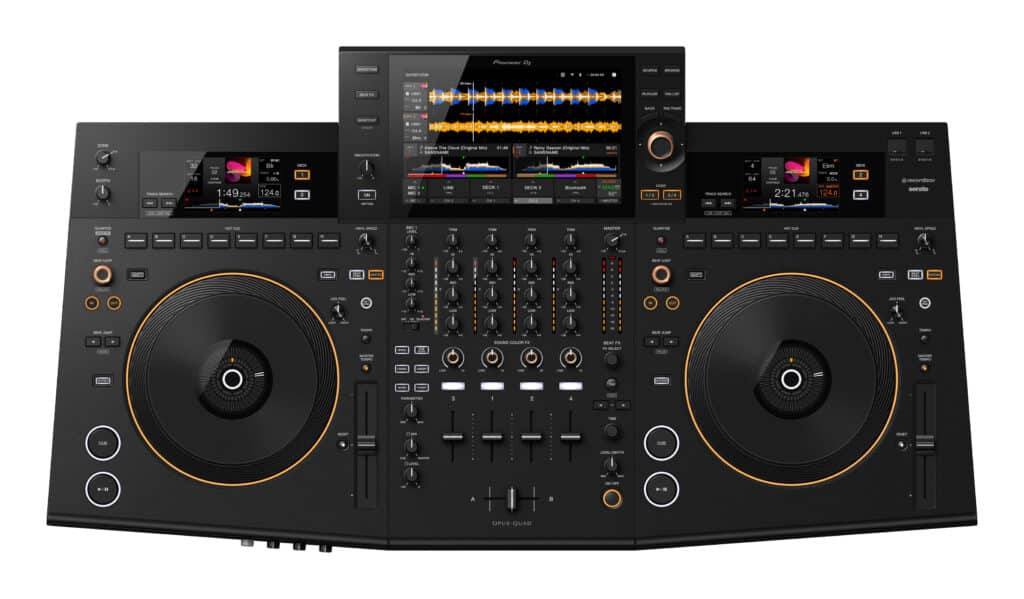
COST: £2899.00 inc TAX / €3200.00 inc TAX / $3100 pre-TAX
Headline features
With such a monumental redesign, here are some highlights of what OPUS-QUAD brings to the table:
- Four stand-alone channels for the first time in a Pioneer DJ all-in-one!
- New minimalist design – no longer a replication of club gear, now has a unique luxury look
- 10.1” central HD multi-functional screen that includes BEAT FX controls
- Unit is built on a 5-degree slope for ultimate comfort and intuitive use
- Joy-stick rotary encoder for main screen functions and new rotary loop encoders per deck
- Ability to playback from USB flash drives, SSD drives, computers and smart devices with four USB ports and Bluetooth connectivity
- Zone out – can send a playlist to an alternative room
- Built In WiFi For Streaming From Dropbox and CloudLibrarySync
One-of-a-kind design
It’s immediately apparent that this device is different! It has an angled shape, is built with a slight slope and has minimal markings and buttons.
The slope makes for comfortable mixing, even with prolonged use, as the gradient promotes a healthy wrist angle. Perfect for DJs performing longer sets.
The device has a wooden-style trim around the front panel, giving this unit a real retro-future feel! This is also true of its general design, as OPUS appears to be a mix of several recent Pioneer DJ products rolled into one.
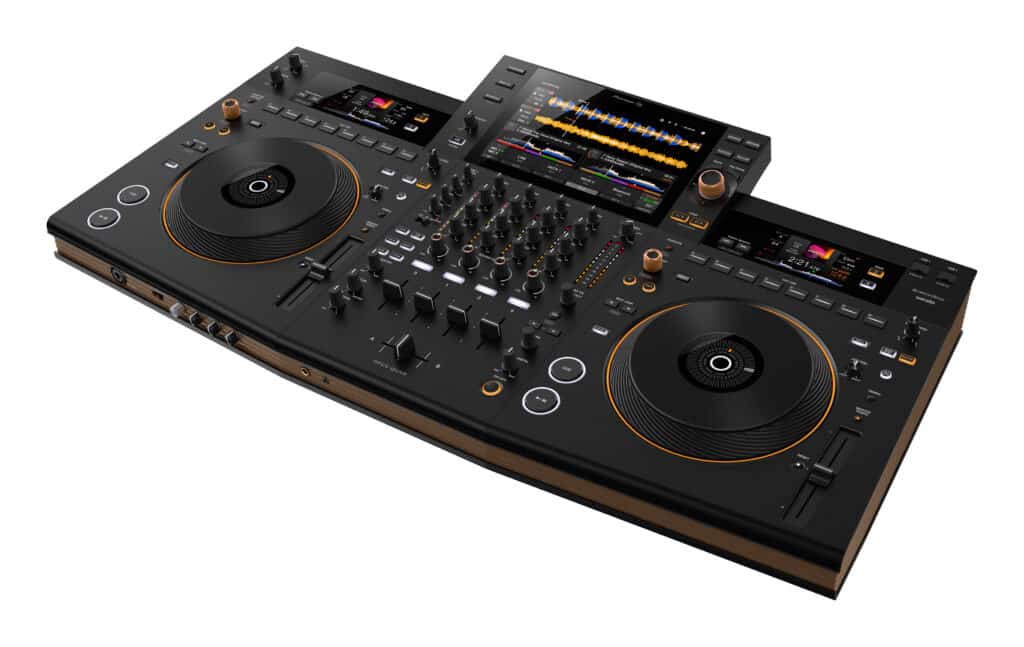
Like a best of Pioneer DJ composition, it sports a DDJ-FLX4 matt black with orange colour scheme. Borrows the XDJ-RX3’s capable screen. Takes the DJM-V10’s orange, white and red channel meter lighting and throws in the functionality of the XDJ-XZ!
New Mixer with Screen integration
The minimal look of the mixer section is deceiving. Deep within is MORE functionality than found on the comprehensive club-standard mixer found on XZ!
This section is made up of four channels, each able to play in standalone mode from a single USB source. Whether that be a flash drive, a computer, an SSD or smart device connecting via Bluetooth!
The music source is selected on the main 10.1” screen that sits above. This is in place of a physical source select dial as found on typical Pioneer gear. In fact, the screen takes on several duties from the mixer, allowing the mixer it to achieve its much cleaner, more spaced-out look.
On the left-hand side of the mixer we find white glowing SOUND COLOR FX buttons, laid out in vertical rows rather than horizontal, as with the new DJM-A9.
Their parameter pot is uniform with most other pots on the device, a central theme with OPUS-QUAD.
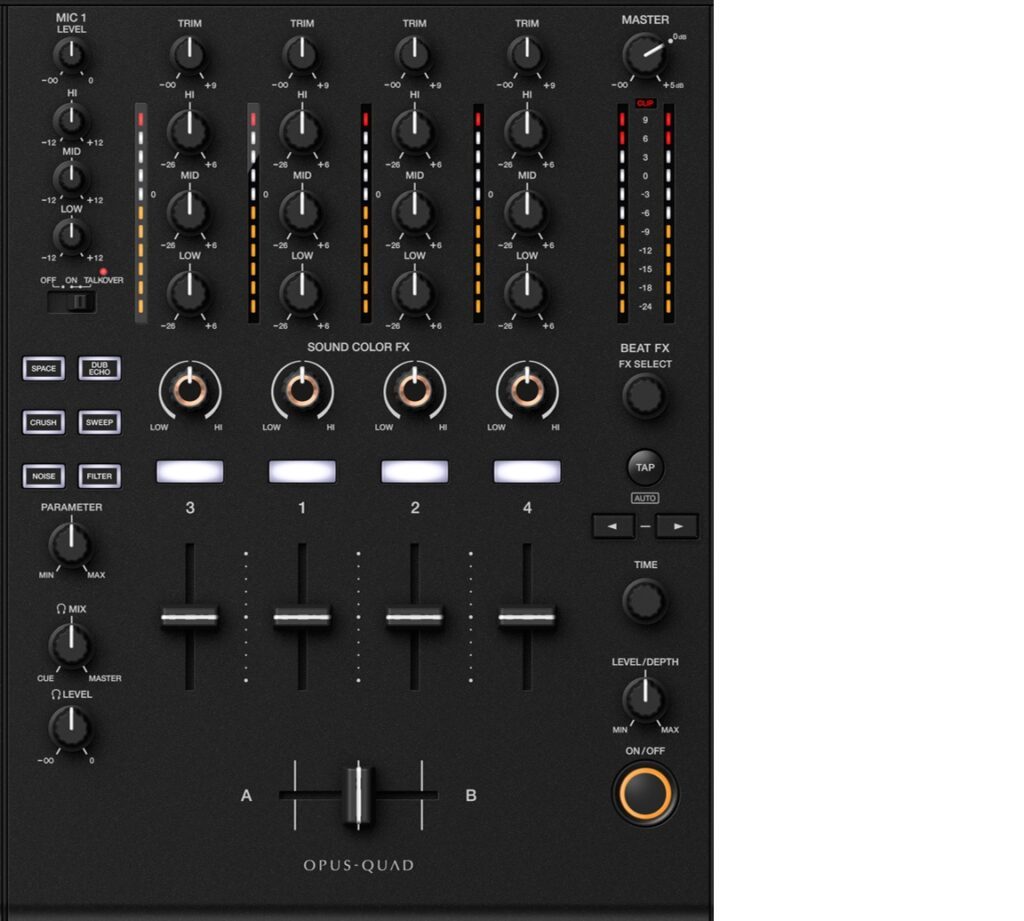
The sound colour pots, on the other hand are now accented with a brass ring in the same shade used for the encoders.
This uniformity makes for a familiar yet entirely new Pioneer experience. Getting to grips with OPUS-QUAD takes no time, especially for DJs used to playing on XDJ all-in-ones.
If you need to brush up on your XDJ skills, our XDJ courses can elevate your skills and confidence. Whether you want to learn the basics or get stuck in to more advanced techniques, we’ve got you covered.
Mixer BEAT FX
In typical Pioneer fashion, the beat effect controls are found on the right-hand side of the mixer, but some controls have been moved into the screen above.
The glowing ON/OFF button looks like that from the DJM-V10, but glows orange instead of red.
Above that are the LEVEL/DEPTH knob, the TIME encoder, BEAT division select buttons, the manual TAP button and BEAT FX SELECT encoder.
These all serve muscle memory well, as their layout and function is virtually unchanged from Pioneer mixers of the last two decades and beyond, with the exception of having an encoder to select beat effects from instead of a dial.
Check out our OPUS-QUAD performance mix and watch us in action with this new mixer and all of OPUS’ other features!
10.1” High Resolution, Multi-Function Screen
The screen is the same as that found on the XDJ-RX3. Only now it’s been given more reign over creative functions, with a particular focus on BEAT FX.
Capitalising on the very capable screen is an ingenious move that was perhaps not fully realised on the RX3.
Now, a lot of mixer functionality has been pushed away from hardware controls and up into the screen.
To facilitate this in an effective way are three dedicated screen mode buttons, situated to its left-hand side.
Plus, a SMOOTH ECHO control. The screen modes are WAVEFORM, BEAT FX and SHORTCUT.
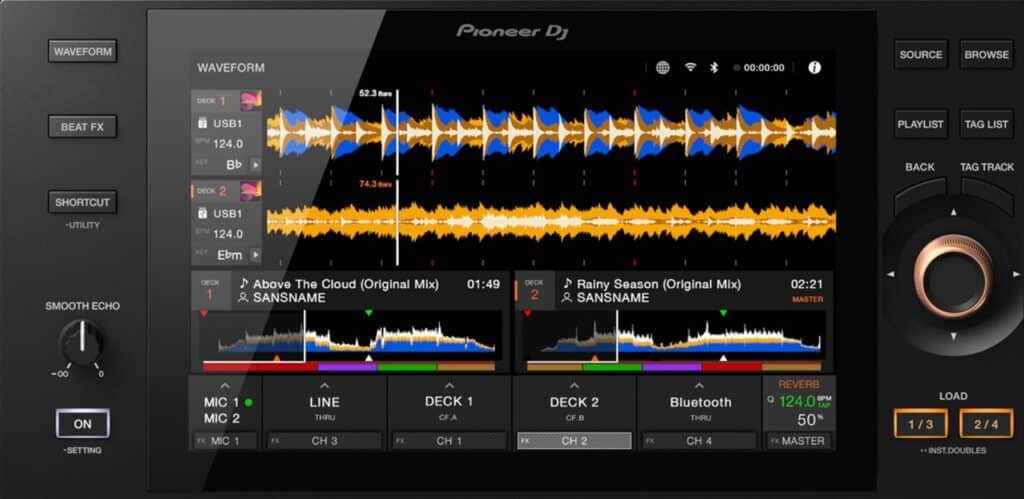
SMOOTH ECHO Control
SMOOTH ECHO was a popular feature on the DJM-S11 and returns with OPUS.
It allows DJs to set a convenient trigger for an automatic high pass echo to activate over an outgoing track. The perfect feature for freeing up hands to perform other tasks.
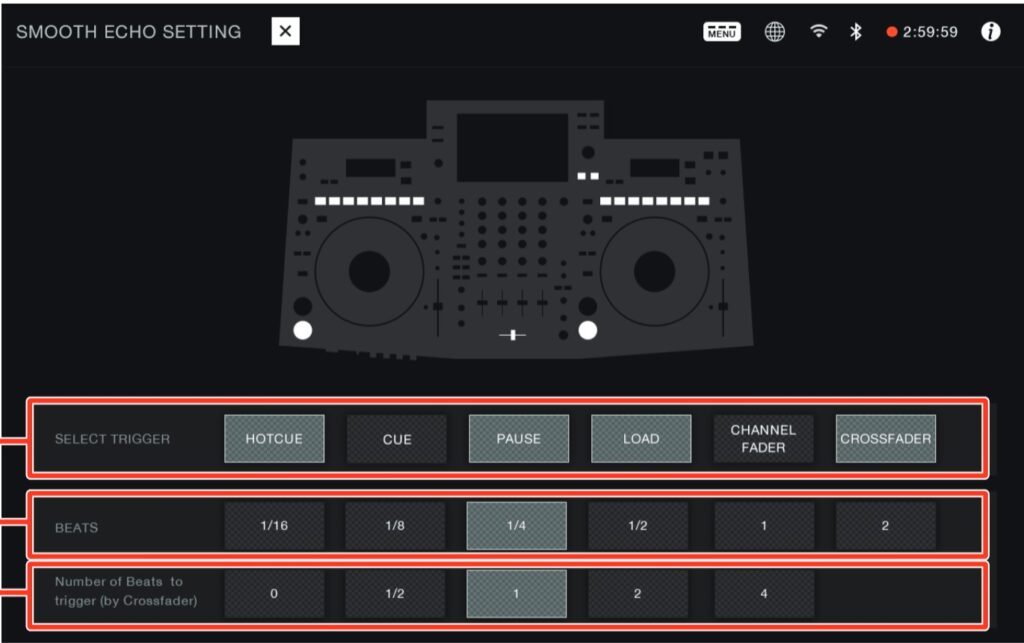
SMOOTH ECHO settings
SMOOTH ECHO can easily be toggled at any time with its glowing ON button. Above its controls are the three screen mode buttons.
WAVEFORM Mode
Here, the screen’s main focus is showing performance data such as track waveforms and BPM. It is possible to toggle between two-deck and four-deck view.
To the right of the screen are physical button controls, familiar to users of Pioneer XDJs and CDJs. They are SOURCE, BROWSE, PLAYLIST and TAG LIST.
The coolest upgrade in this department, however, is the selection encoder. It now has a joystick style which can pivot left, right, up and down. This makes navigating menus and lists easier than ever before. It also looks great with its elegant bronze finish.
BEAT FX Mode
The screen’s main focus becomes a giant XY-PAD for adjusting the beat effects. This means frequency and intensity can be adjusted with one finger swipe, a fun, convenient way to get full control over the effects!
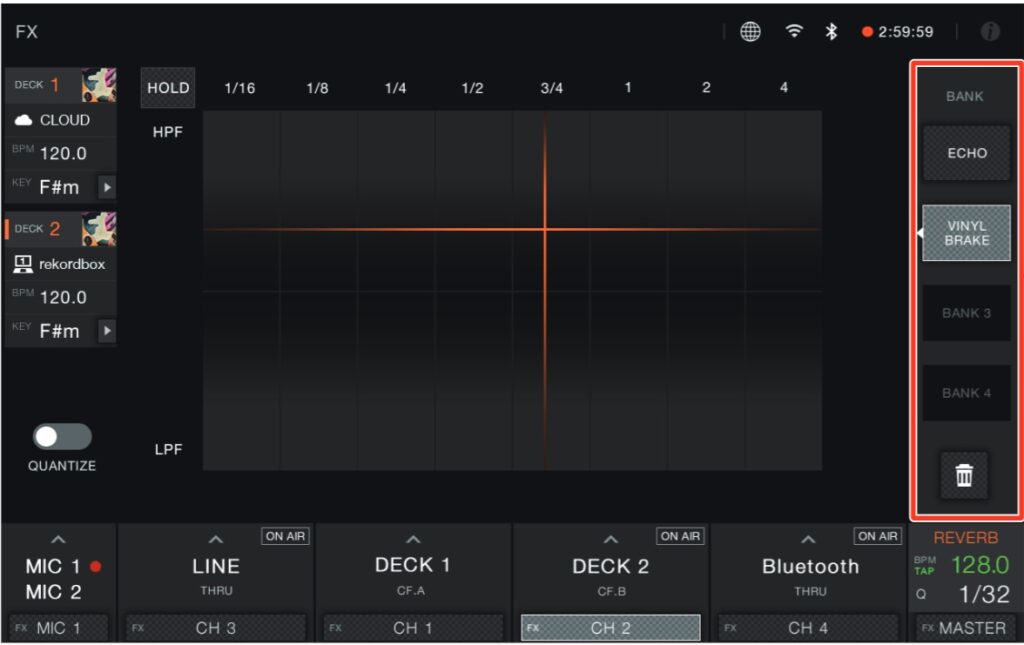
On Screen XY-PAD
There are currently 14 effects built into OPUS, but storing them digitally means there is potential for more to be added in future. It also means the current effects can be updated down the road, too.
As on the RX3, there is also an effects bank to store your four favourite effects for quick access.
SHORTCUT Mode
Pressing and holding the SHORTCUT button brings up the UTILITY screen. From here, all sorts of functions, such as joining a Wi-Fi network and toggling Bluetooth, can be adjusted.
Revised Deck Sections
The deck sections feature most of the controls found on OPUS’ XZ predecessor.
JOG WHEELS
OPUS has full-size mechanical jog wheels that have tension adjustment going from free-spinning LIGHT, to a nudge-friendly HEAVY. As with the XZ and flagship CDJs, the feel can be adjusted to suit any DJ’s preference.
They have been redesigned to feature a new striped texture around the rim rather than finger-nudge grooves. Nudging is just as intuitive as ever, but the look is now less club gear and more like an instrument.
There’s a new rubbery texture on the top plate, which is interesting, and although nothing like any jog before it, feels premium.
The glowing coloured rings around the jogs’ rims are functional as well as decorative. Now that each deck is dual-layered, the ring will illuminate the colour you have assigned to the currently playing layer.
The central screen of the jog wheel is more basic than on the XZ, but allows OPUS to be less cluttered. It goes back to the more ‘traditional’ pre-CDJ-3000 style of simply showing the playhead position and CUE marker.
DECK DISPLAY
The central display of the jog wheels doesn’t need to cram in all the data found in those of the XZ, as each deck section now has a mini display above the jog wheel.
In our testing, we have found glancing here instead of peering down into a jog screen to be more comfortable as it feels like a more natural position.
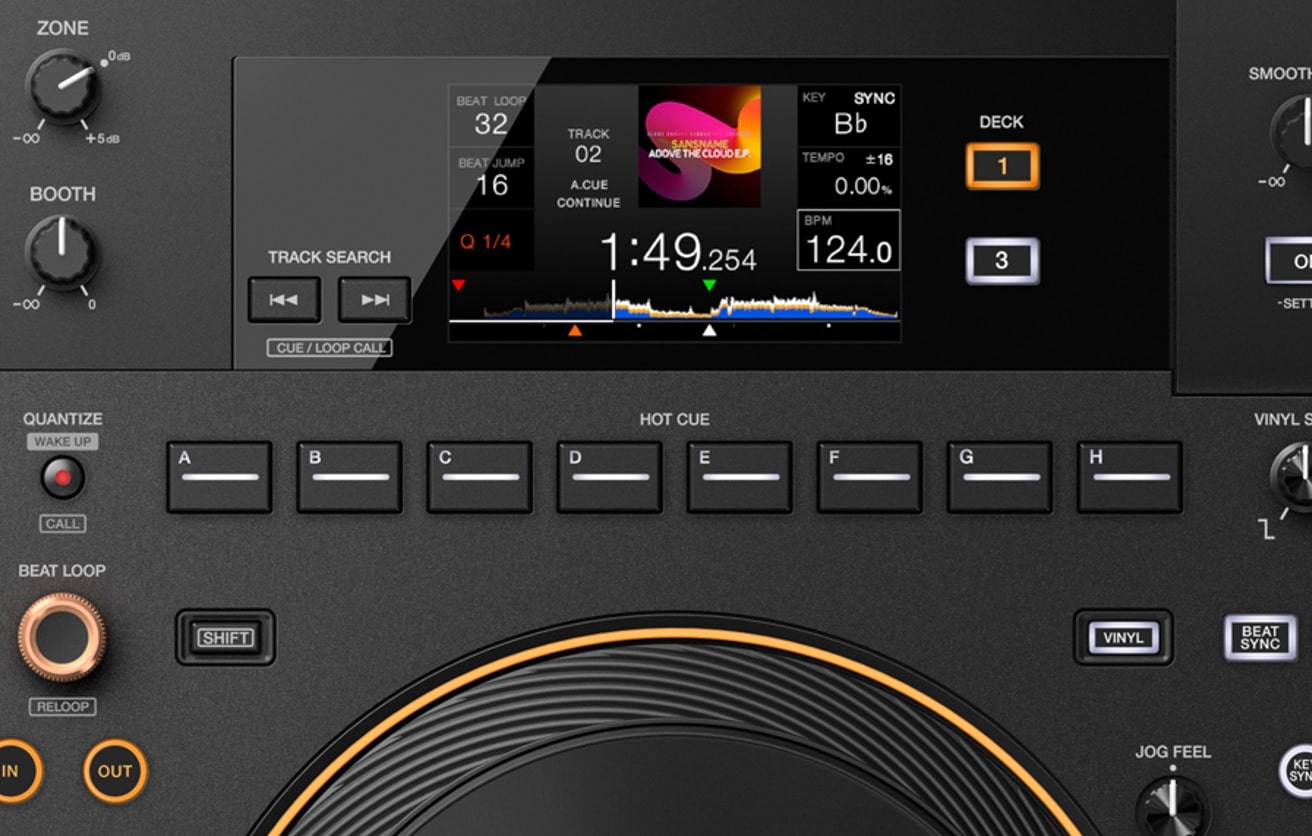
The deck displays give users a dedicated view of a playing track’s full waveform, album artwork and performance data. BPM, tempo range, key and beat loop and jump lengths are also easily glanced at here.
HOT CUES
Another feature which has changed on OPUS is the performance pads. No longer are there eight brightly coloured pads sitting below the deck.
Instead, OPUS takes on CDJ-3000 style mini HOT CUE buttons sitting neatly in a strip directly above the wheel. However, as with the buttons on CDJs, they are not multi-functional and just do HOT CUES and saved loops.
In line with OPUS’ minimalist style, they now have the same uniform white glow but will also display any custom colour coding when in use.
All buttons either have a white or orange hue. Even the PLAY buttons lose their well-established Green glowing rims for uniform white ones.
SMART CUE
With the new SMART CUE feature, you can automatically overwrite the current cue position with recalled HOT CUES. This makes it much quicker and more intuitive to use HOT CUES with one touch.
SLIP REVERSE
Interestingly, the SLIP button has been removed, and so now there is only SLIP REVERSE. This may be missed by some users as SLIP was a great creative tool when used with scratching, vinyl-style rewinding and start-stopping a track.
However, this can perhaps be offset by using the SLIP ROLL and VINYL BREAK effects included in the BEAT FX.
The grid markings on the entire device have mostly gone, too. There are no more lines within the full-size tempo fader. And the upfaders and crossfader now just have a few lines and dots rather than the precise mm line markings that Pioneer kit has become distinct for.
Loop encoders
An obvious win for OPUS is that it has ditched the loop-length buttons in favour of encoders. All of the dials and encoders have been levelled up significantly! The loop encoders add functionality to on-the-fly looping which has long been cried out for. They also look stunning in brass, giving the unit a sophisticated look.
Using encoders instead of buttons to set a loop lengths is game-changing and something found on competitor devices for a while now, so it’s great to now have on Pioneer kit.
Another mixing tool built into the deck section is the KEY SYNC button. When pressed, the key of a song is adjusted to compliment the MASTER track.
A forward-thinking innovation that allows tracks that might not have previously worked together to fit harmonically.
Connectivity
Wi-Fi and Bluetooth
OPUS-QUAD can connect to any smart device via Bluetooth. Handy for taking those obscure last-minute requests! Also great for sending a playlist from an app on your phone to the ZONE output for a secondary room. You can use the bluetooth to connect the all-new Rekordbox app for iOS and Android, coming in April 2023.
OPUS also includes Wi-Fi connectivity. This allows DJs to connect to an internet connection and access their Rekordbox library directly from the cloud using CloudLibrarySync and Dropbox, part of the creative and professional Rekordbox plans. You can also use the WiFi to access pro DJ link on your laptop running Rekordbox.
Support for third-party streaming from the likes of Beatport and TIDAL is still unconfirmed.
Having Wi-Fi enables endless possibilities for Pioneer to implement new features in future updates.
ZONE Output
Now DJs can play through master speakers, booth speakers AND send additional music to a third set of ZONE speakers. Great for corporate events and weddings where there is likely to be a greeting lounge or separate room that needs background music.
I/O

In terms of inputs and outputs, OPUS is comprehensive, with the right balance of classic and modern ways to get the audio pumping.
As before, there are two traditional top-mounted USB ports designed for flash drives, but now there’s also a speedy gen 3.2 traditional port at the rear to support large SSD drives. Plus, a USB-C port for connection to modern computers and smart devices.
This, teamed with OPUS’ next-generation track browsing abilities, makes light work of sorting through vast libraries.
You can also record your sets in high-quality to any inserted USB device.
Both sizes of headphone jack are covered, and OPUS can plug into domestic or professional-grade amplifiers with either its RCA or XLR MASTER outputs.
The ZONE output is on XLR, which makes sense as the ZONE area will most likely be some distance away and in need of professional-grade cabling.
The BOOTH output is on TRS jacks which is industry standard.
Both microphone ports are flexible in that they accept XLR or TRS connections, so there’s no need for adapters.
For networking, there’s an ethernet LAN port for connection to Pioneer’s SMART LINK, how Pioneer equipment talks to each other.
To make use of OPUS’ SMART LINK are 2 RCA inputs for phono sources like turntables, or line-level ones, like CDJs. Not that OPUS needs any with four channels already available to DJs in standalone mode!
Pioneer DJ Opus Quad Price:
- £2899.00 inc TAX
- €3200.00 inc TAX
- $3100 pre-TAX
Video Review
The OPUS-QUAD Experience
OPUS strikes a great balance between retaining the legacy powerhouse reputation of the XZ whilst introducing us to a whole new timeless look and feel.
It may have a large price tag but offers everything working professionals need in a great-looking unit, the ultimate all-in-one solution for DJs.
Its connectivity is forward-thinking, and we can’t wait to test the Rekordbox mobile app soon. Although there’s no official word on this, we’d love to see third-party integration for the likes of Beatport running directly on the unit.
OPUS is really comfortable to play on. We felt at home on it quickly and found it to be a very natural progression from the older style of XDJ.
The device is an exciting new chapter for Pioneer DJ. It’s masterful mixing of features is sure to inspire the imaginations of DJs and audiences alike.
We’re here to take you through everything you need to know to get the most out of OPUS’ powerful performance software, Rekordbox, through our beginner and intermediate courses. Try a FREE lesson here.
Or to jumpstart your DJ career and achieve guaranteed results, check out Complete DJ Package!
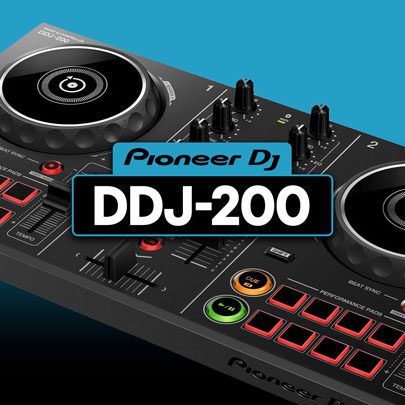
Pioneer DJ-200 DJ Course
4.75 hours
28 lessons
Beginner
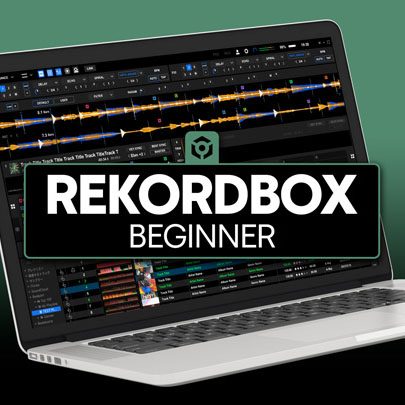
Rekordbox DJ Course
5.5 hours
37 lessons
Beginner
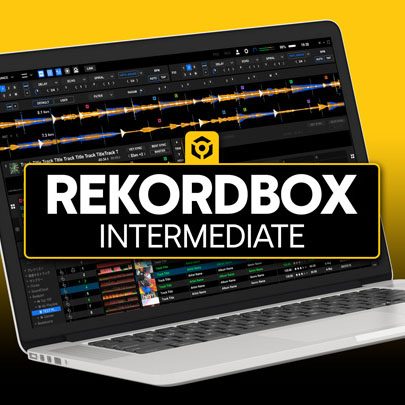
Rekordbox DJ Course
7.5 hours
49 lessons
Intermediate
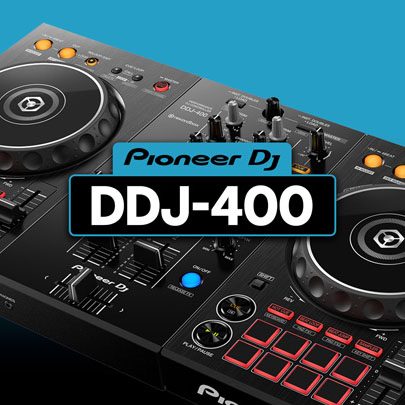
Pioneer DDJ-400 DJ Course
7 hours
30 lessons
Beginner
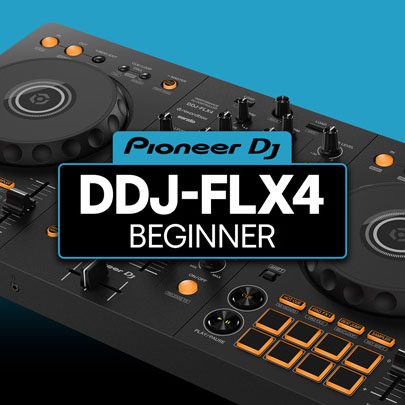
Pioneer DJ DDJ-FLX4 Course
7 hours
41 lessons
Beginner

Complete DJ Package
835 hours
1300+ lessons
Creative
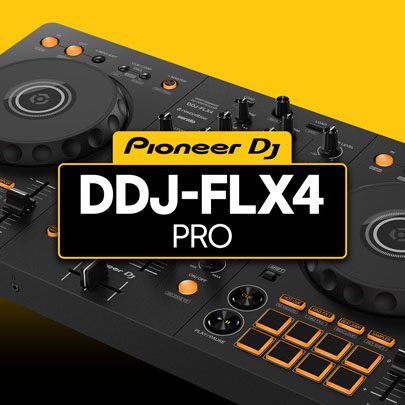
Pioneer DJ DDJ-FLX4 Pro Course
9.5 hours
49 lessons
Intermediate
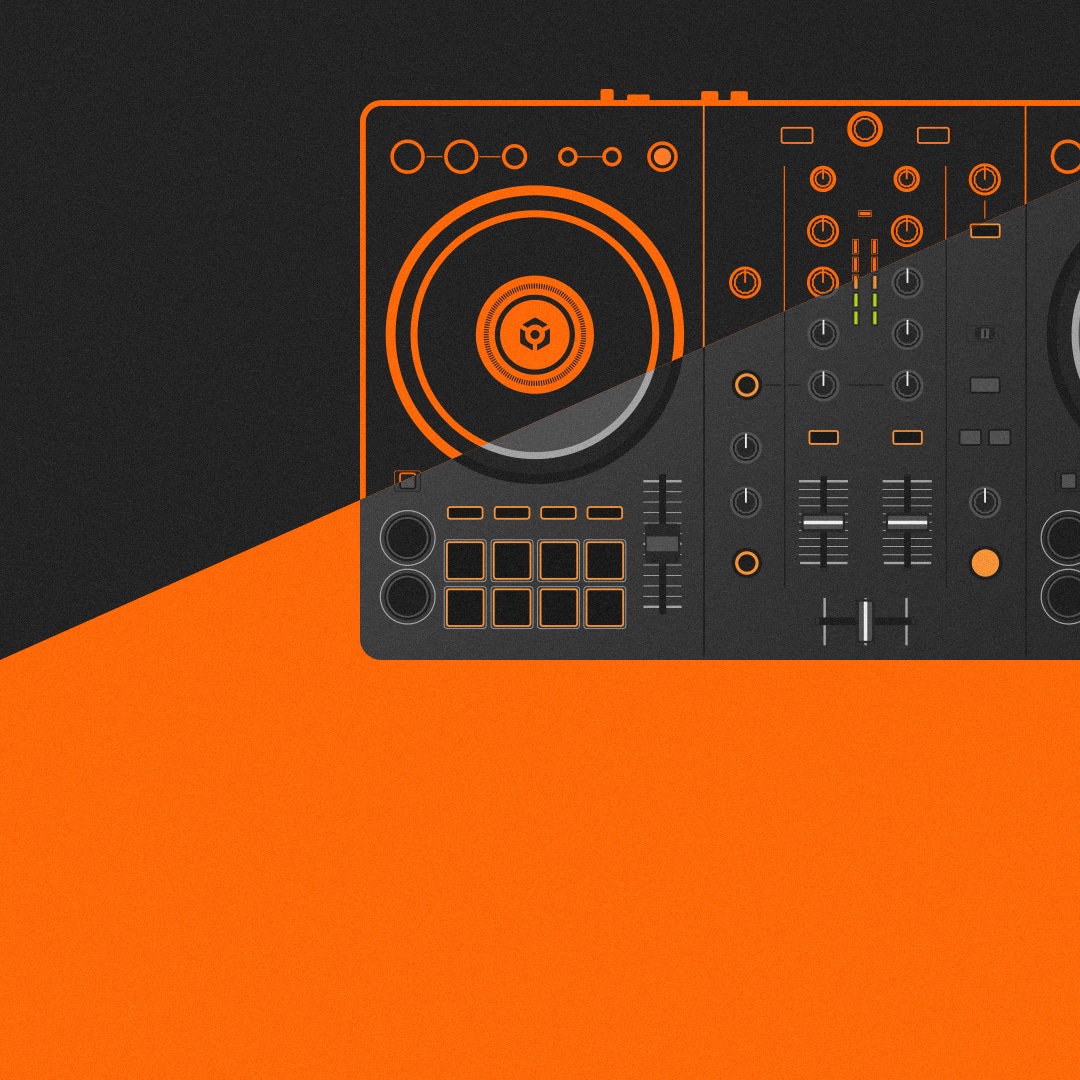
DDJ FLX4 Beginner To Pro Bundle
16.5 hours
90 lessons
Beginner

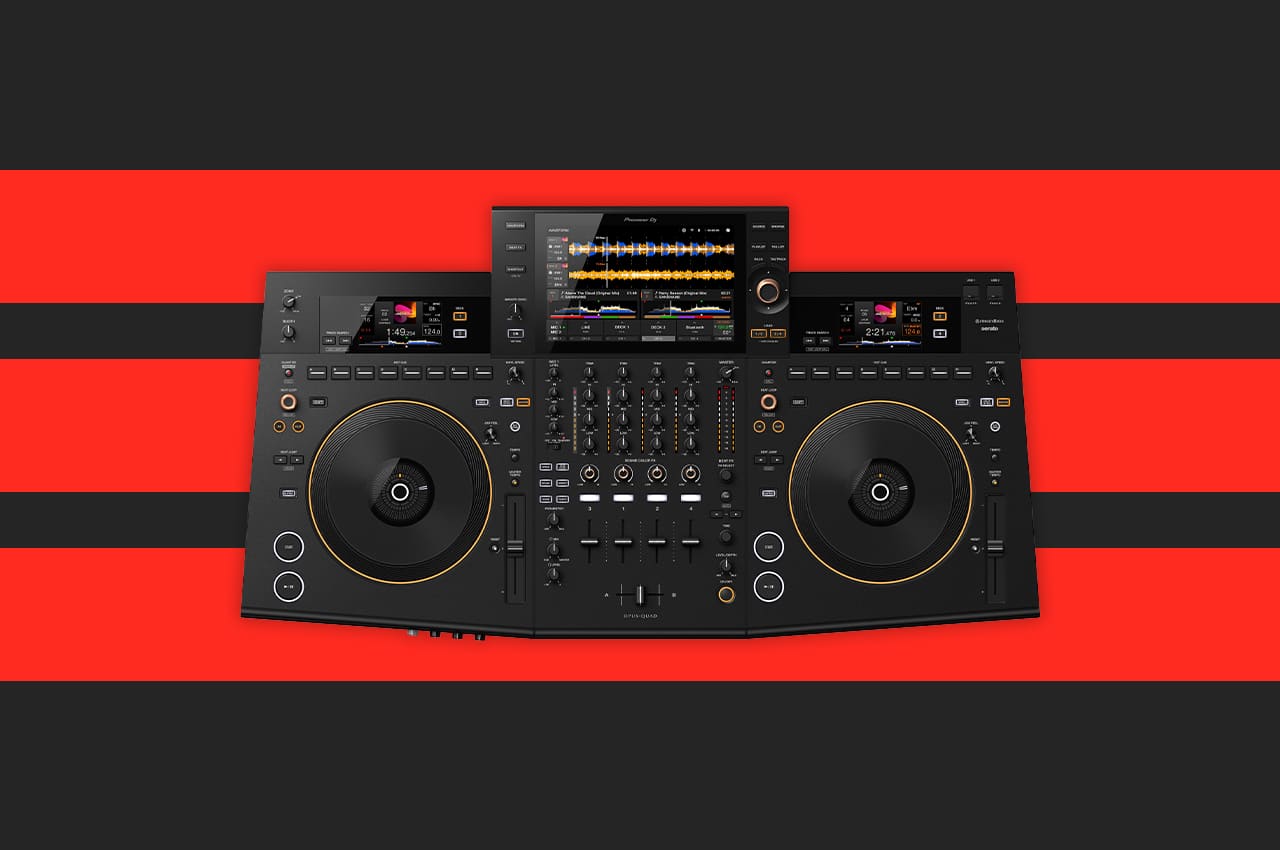
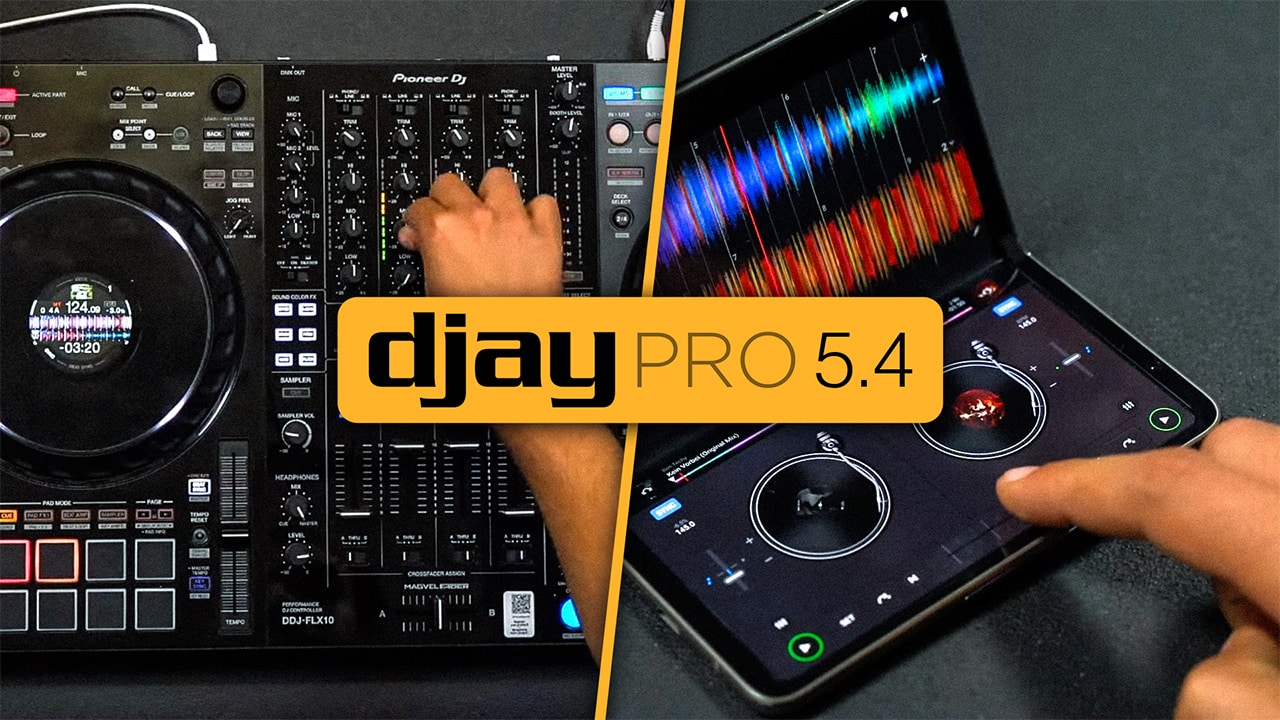

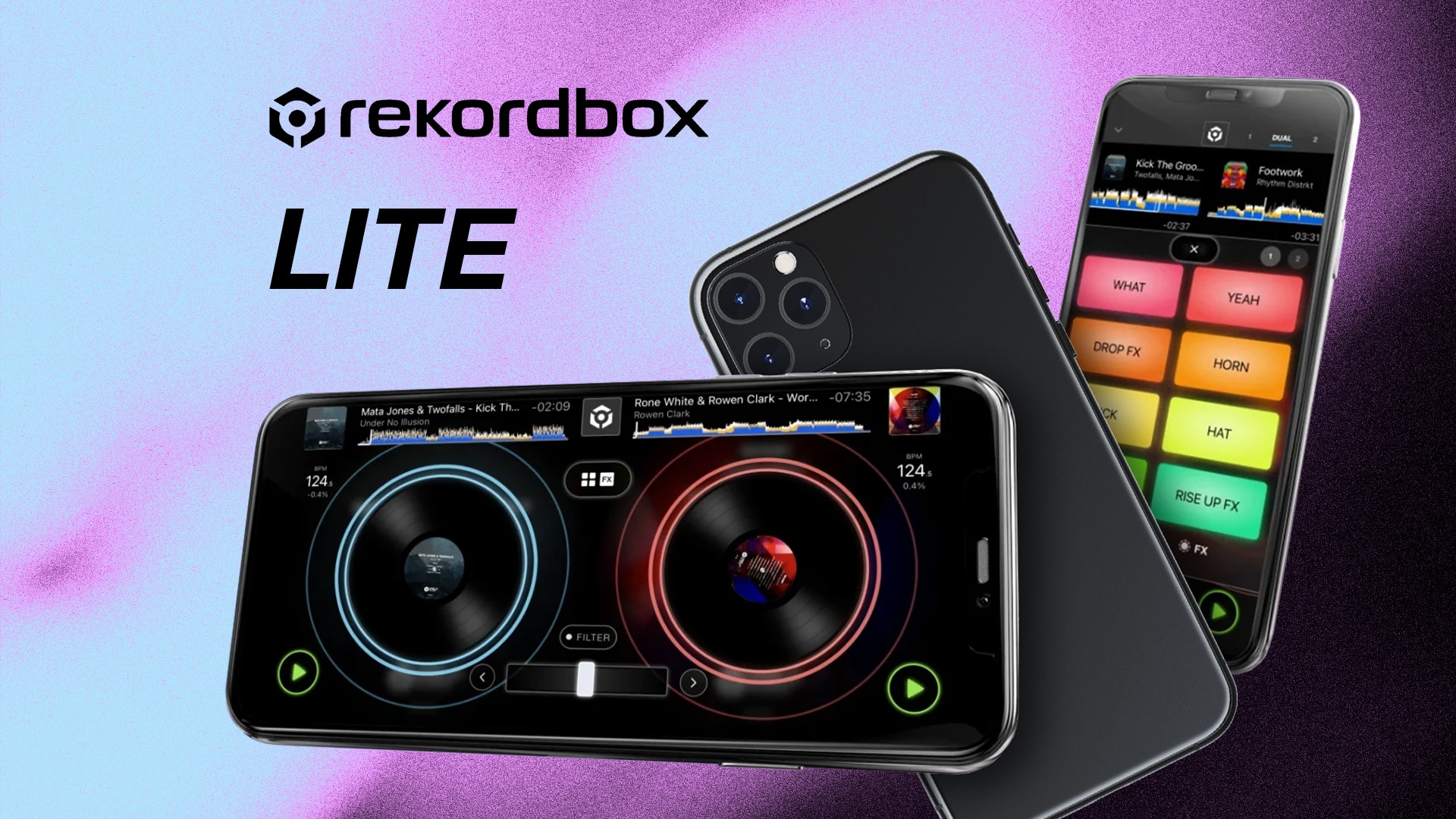

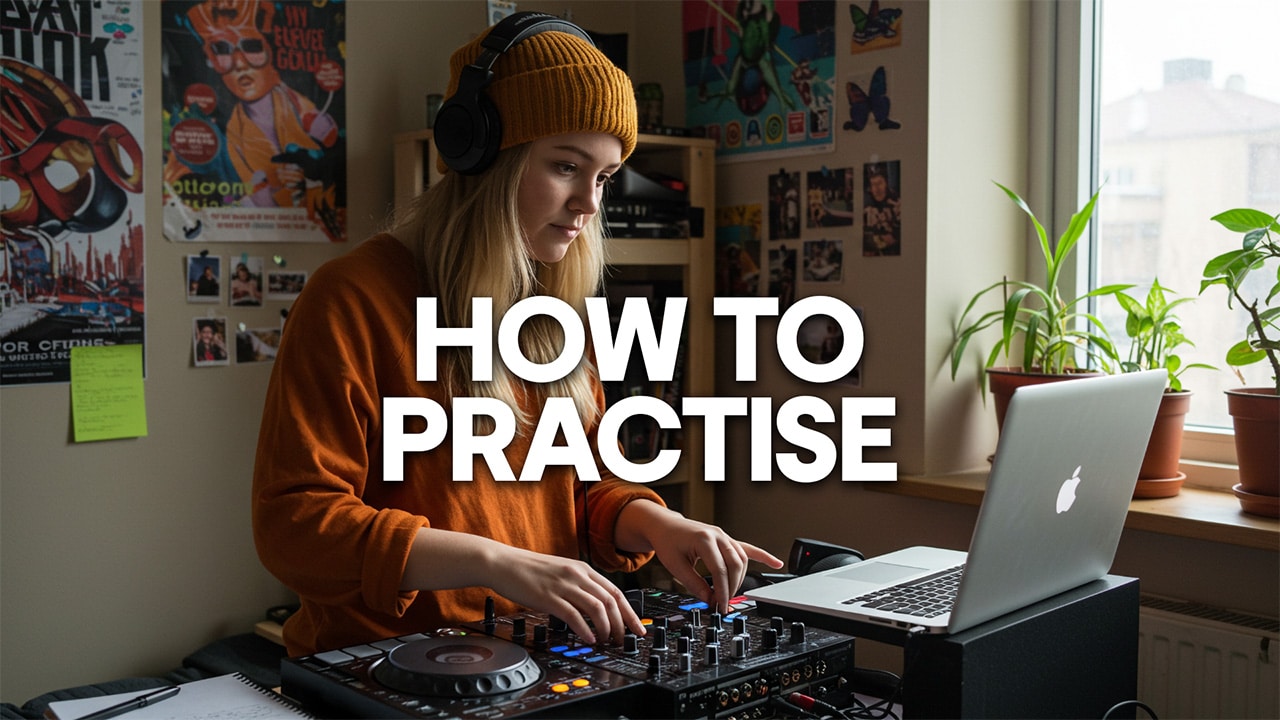
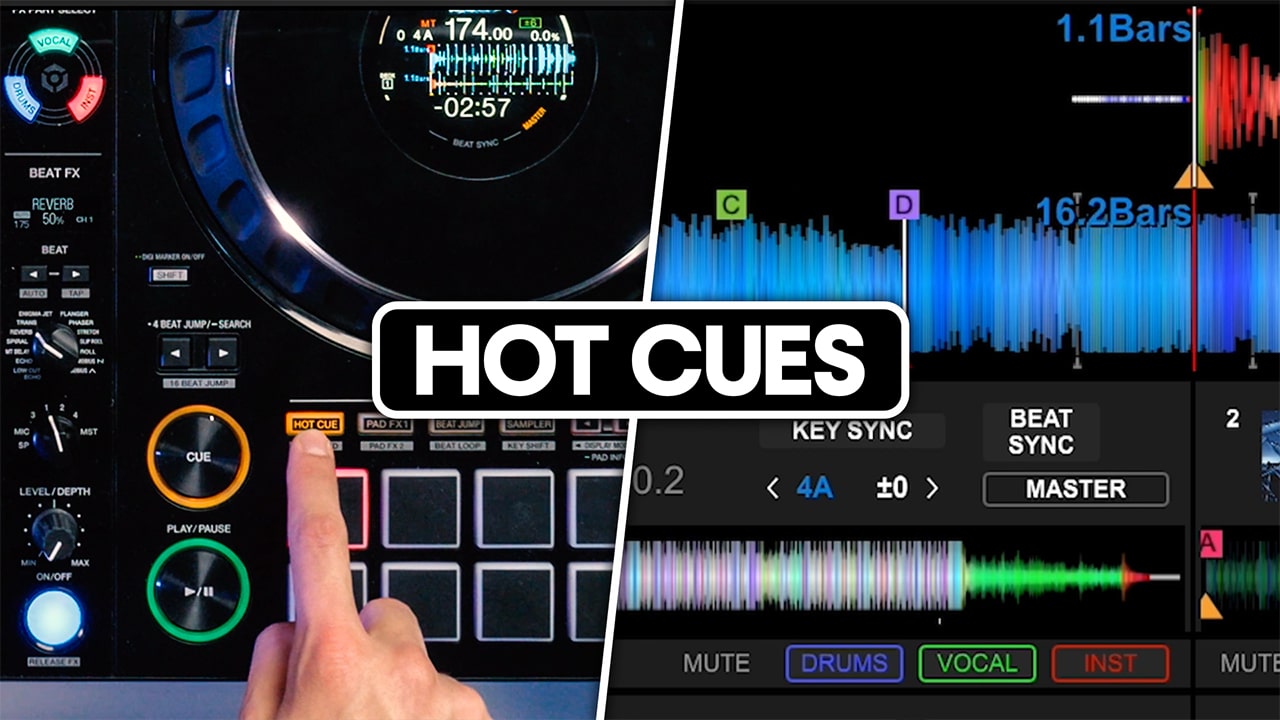
0 Comments